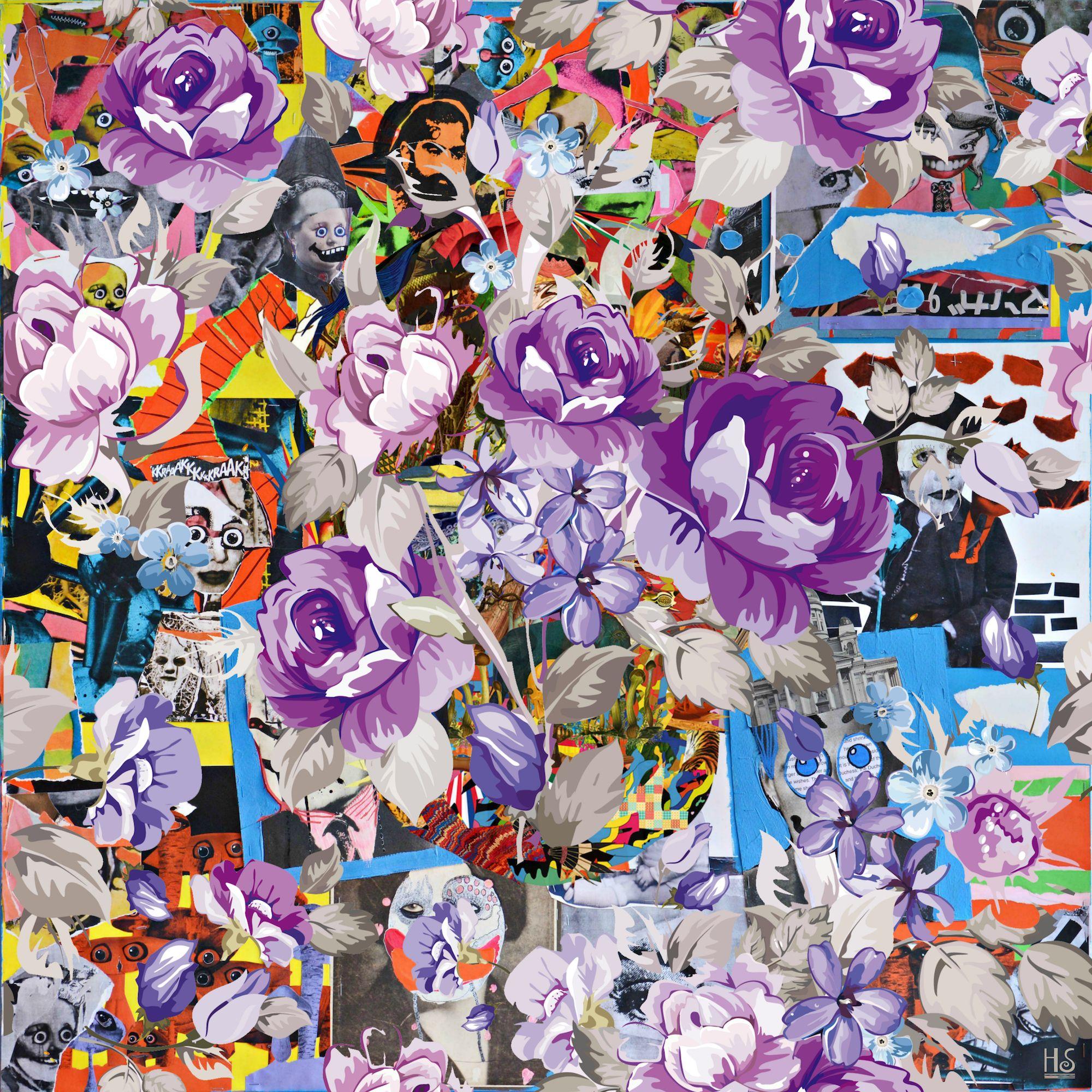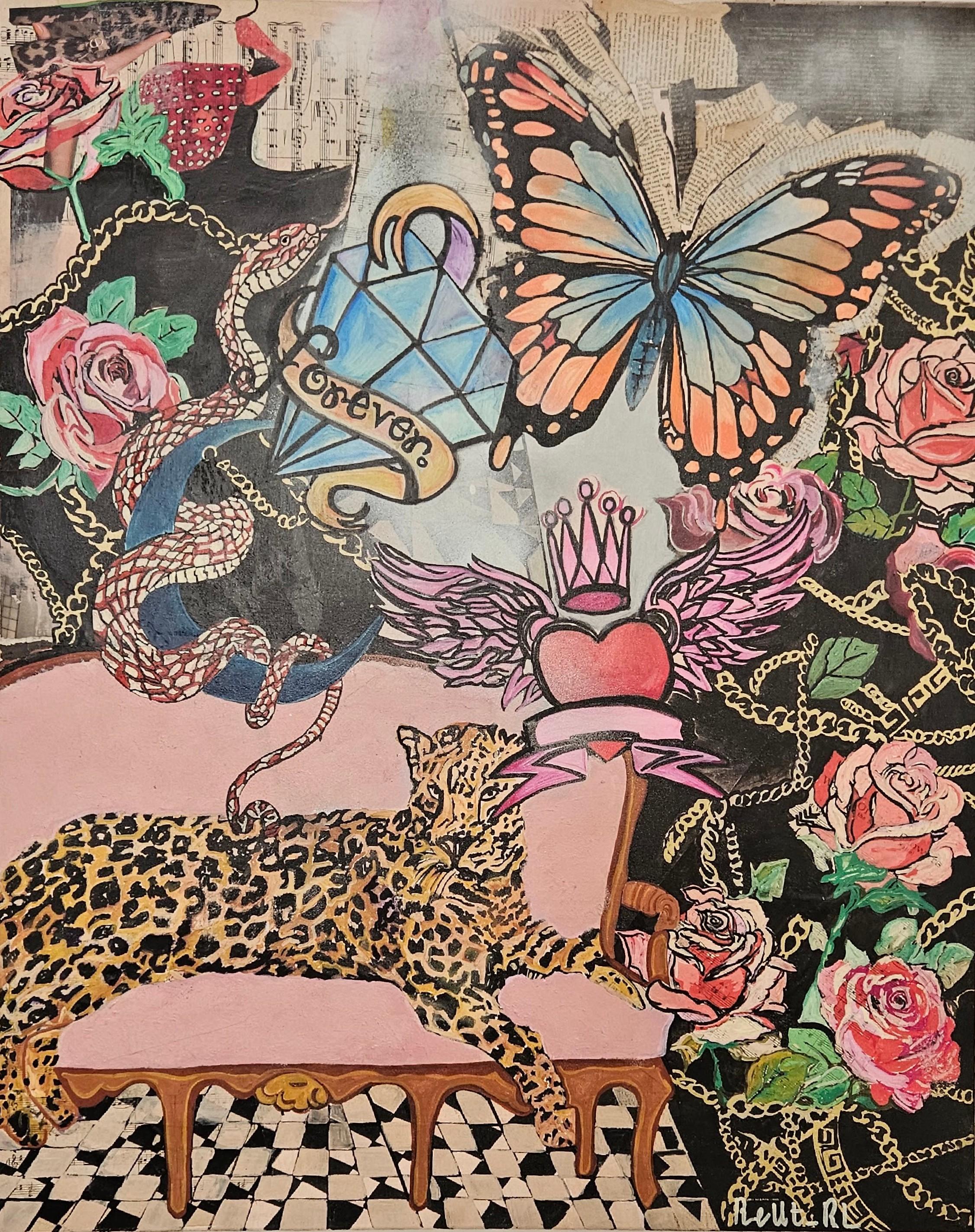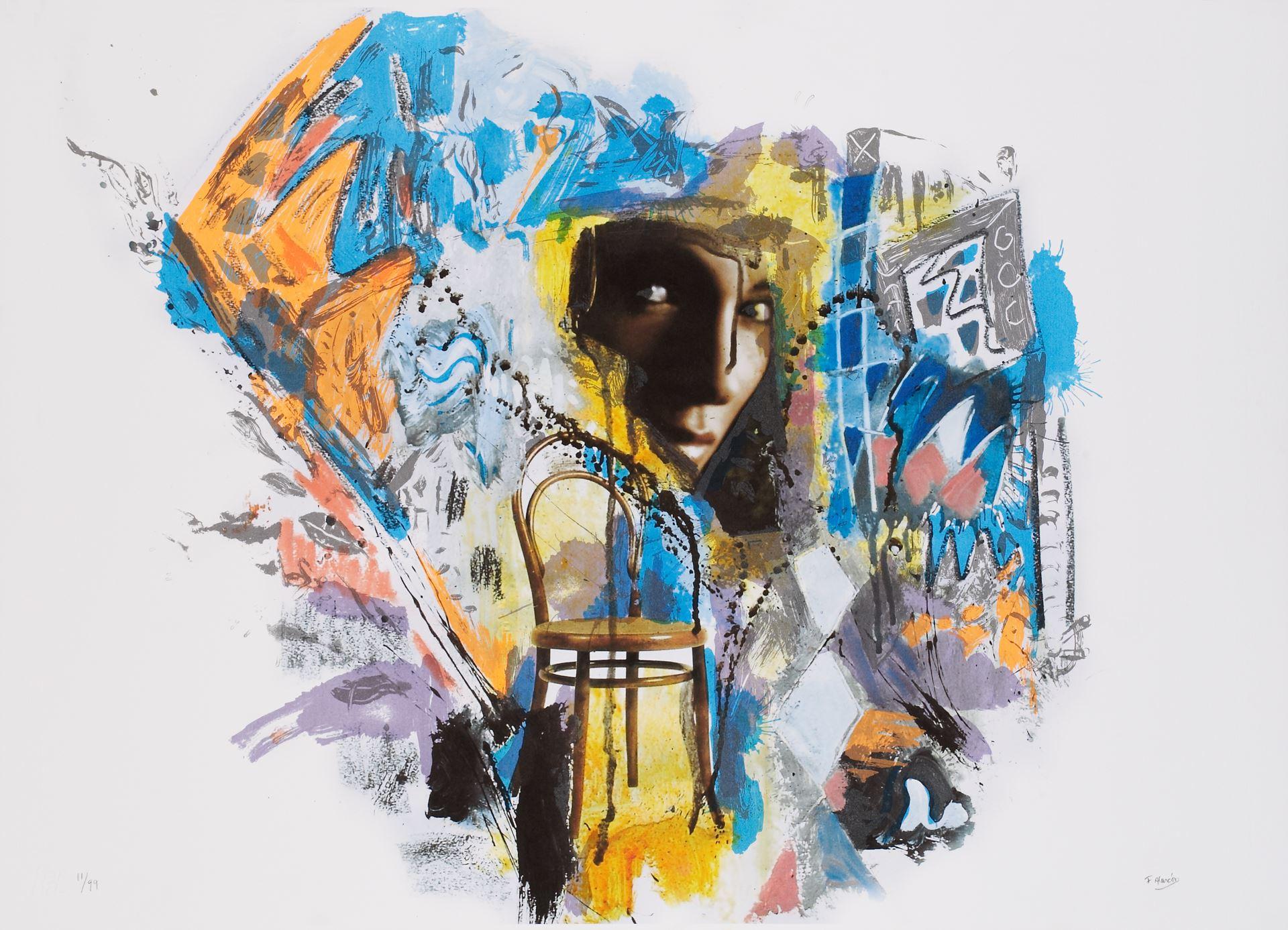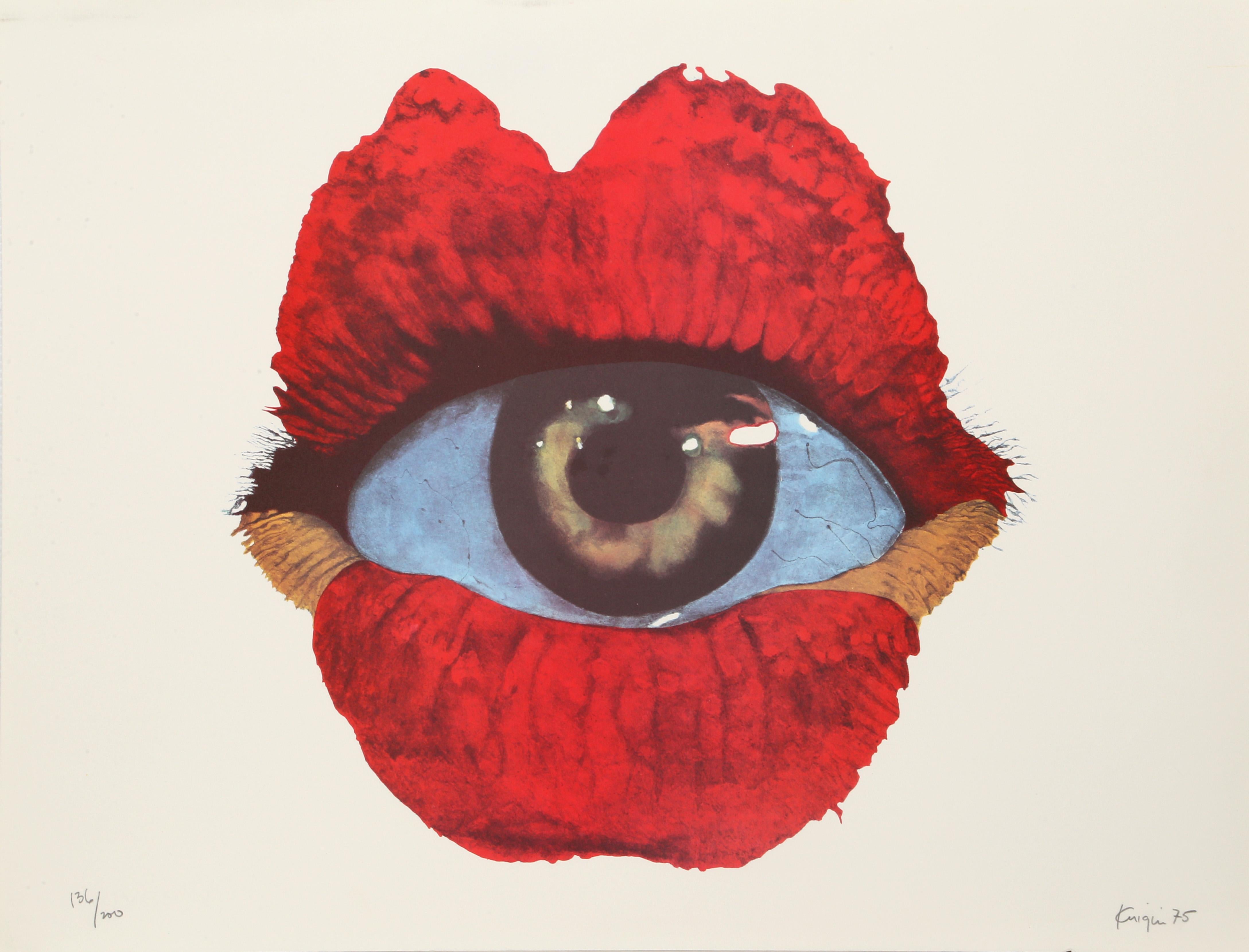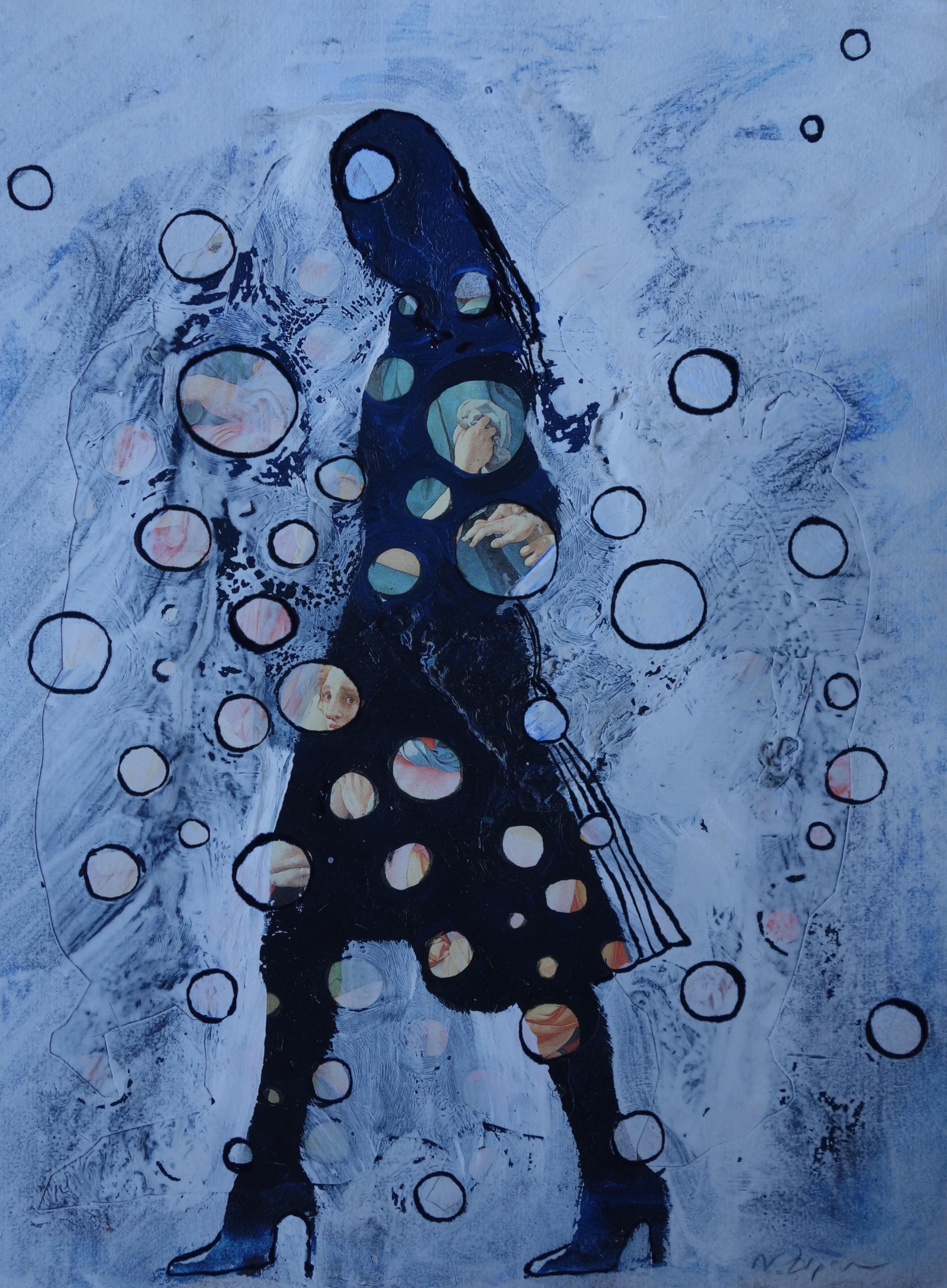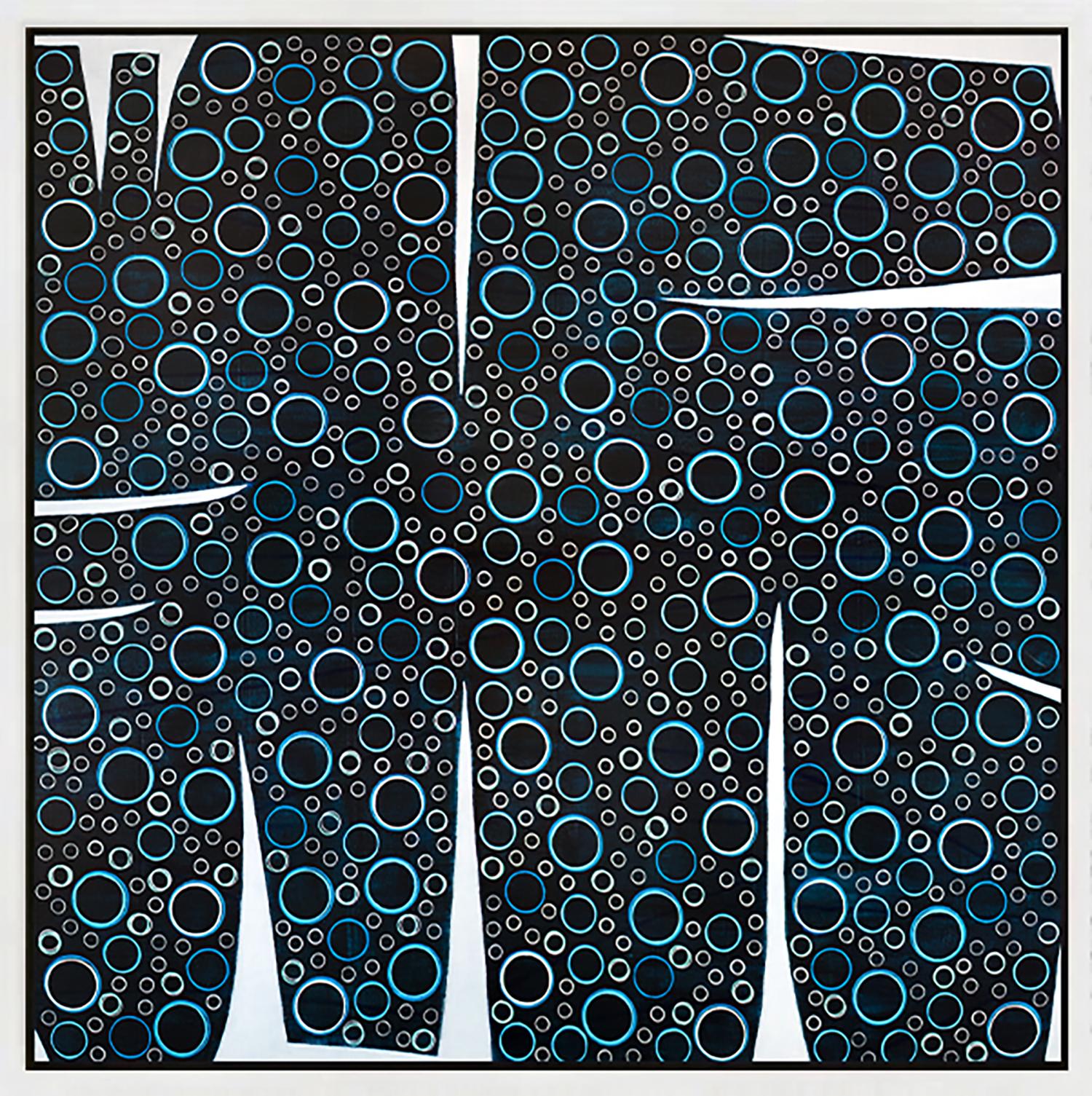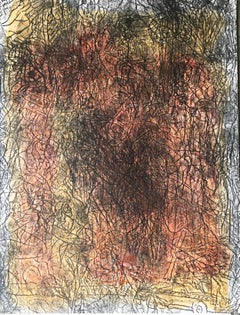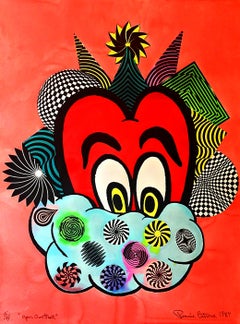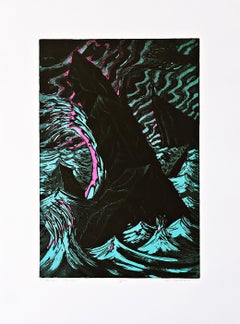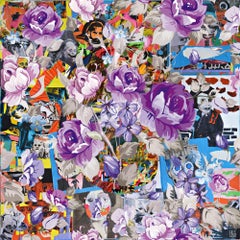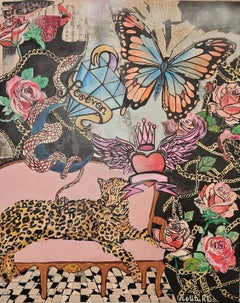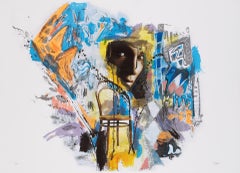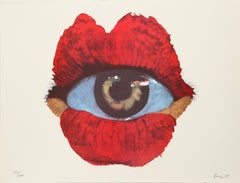Items Similar to Turn to Me I See Eternity popular limited edition Valentine's day print Signed/N
Want more images or videos?
Request additional images or videos from the seller
1 of 7
Stephen PowersTurn to Me I See Eternity popular limited edition Valentine's day print Signed/N2016
2016
$2,800
£2,171.48
€2,470.36
CA$4,006.41
A$4,377.34
CHF 2,302.22
MX$52,626.62
NOK 28,986.88
SEK 27,214.85
DKK 18,446.65
About the Item
Stephen Powers
Turn to Me I See Eternity, 2016
Three color screenprint on 235g Coventry Rag
Pencil with artist's trademark hat logo and numbered from the edition of 100
12 × 12 inches
Edition 40/100
Unframed
Even if you don't have a crystal ball and are not a psychic, "Turn to Me I see Eternity" - this long sold out limited edition is still an incredibly reassuring and romantic message. It's based upon an installation with the same message the artist created in the city of Philadelphia. The work comes in the artist's original sleeve.
Stephen Powers Biography:
Stephen Powers is a contemporary American artist best known for his text-based conceptual works. Frequently emblazoned on the sides of storefronts, large buildings, and gallery walls, his works are influenced by graphic design and traditional sign painting. Born on May 25, 1968 in Philadelphia, PA, Powers studied briefly at the Art Institute of Philadelphia and at the University of the Arts. Moving to New York in the early 1990s, he established his career as a graffiti artist, going by the alias ESPO (Exterior Surface Painting Outreach). The artist’s work primarily deals with issues of legality and political disenfranchisement. After years of illegally painting storefront grates throughout the five boroughs of New York, he was arrested for protesting Mayor Rudy Giuliani the Brooklyn Museum. Powers' work has gained significant recognition and acclaim, leading to projects such as his A Love Letter to Brooklyn (2011). Beyond his art, he has established himself as a both a publisher and author, including work for On the Go Magazine, and books such as The Art of Getting Over, First and Fifteenth, and Studio Gangster. The artist lives and works in New York, NY.
About the Seller
5.0
Platinum Seller
Premium sellers with a 4.7+ rating and 24-hour response times
Established in 2007
1stDibs seller since 2022
458 sales on 1stDibs
Typical response time: 2 hours
- ShippingRetrieving quote...Shipping from: New York, NY
- Return Policy
Authenticity Guarantee
In the unlikely event there’s an issue with an item’s authenticity, contact us within 1 year for a full refund. DetailsMoney-Back Guarantee
If your item is not as described, is damaged in transit, or does not arrive, contact us within 7 days for a full refund. Details24-Hour Cancellation
You have a 24-hour grace period in which to reconsider your purchase, with no questions asked.Vetted Professional Sellers
Our world-class sellers must adhere to strict standards for service and quality, maintaining the integrity of our listings.Price-Match Guarantee
If you find that a seller listed the same item for a lower price elsewhere, we’ll match it.Trusted Global Delivery
Our best-in-class carrier network provides specialized shipping options worldwide, including custom delivery.More From This Seller
View AllThou Shalt Not Covet Thy Neighbors Goods (The Tenth Commandment) Signed/N print
By Richard Bosman
Located in New York, NY
Richard Bosman
Thou Shalt Not Covet Thy Neighbors Goods (The Tenth Commandment), 1987
2 Color Lithograph with hand coloring on Dieu Donne handmade paper
24 × 18 inches
Signed and numbered 6/84; with unique hand-coloring
Unframed
Created as part of the 1987 portfolio "The Ten Commandments", in which ten top Jewish American artists were each invited to choose an Old Testament commandment to interpret in contemporary lithographic form. The "Chosen" artists were, in order of Commandment: Kenny Scharf, Joseph Nechvatal, Gretchen Bender...
Category
1980s Contemporary Figurative Prints
Materials
Acrylic, Lithograph
Thou Shalt Not Make Graven Images (The Second Commandment), Lithograph Signed/N
Located in New York, NY
Joseph Nechvatal
Thou Shalt Not Make Graven Images (The Second Commandment), 1987
3 Color lithograph on Arches paper with deckled edges
Signed and numbered from the limited edition of 84 on the front
24 × 18 inches
Unframed
This three color lithograph on Arches paper with deckled edges is pencil signed, dated and numbered from the limited edition of 84. This classic Nechvatal print was created as part of the 1987 portfolio "The Ten Commandments", in which ten top Jewish American artists were each invited to choose an Old Testament commandment to interpret in contemporary lithographic form. The "Chosen" artists were, in order of Commandment: Kenny Scharf, Joseph Nechvatal, Gretchen Bender...
Category
1980s Abstract Abstract Prints
Materials
Lithograph
"Your Own Heart" unique signed, colleague of Warhol, Haring, Basquiat & Scharf
By Ronnie Cutrone
Located in New York, NY
Ronnie Cutrone
Your Own Heart, 1987
Watercolor and Silkscreen on Paper
Signed, dated and numbered from the edition of 7, with each work being unique.
40 × 30 inches
Fantastic vintage...
Category
1980s Street Art Abstract Drawings and Watercolors
Materials
Mixed Media, Watercolor, Permanent Marker, Screen
Steven's Carnage, from the Art Against AIDS Portfolio, Signed/N Lithograph 38/50
Located in New York, NY
Malinda Beeman
Steven's Carnage, from the Art Against AIDS Portfolio, 1988
Lithograph on paper with deckled edges. Hand signed. Numbered. Titled. Printer's and Publisher's Blind Stam...
Category
1980s Contemporary Abstract Prints
Materials
Pencil, Lithograph
Thou Shalt Not Take the Name of God in Vain (The 3rd Commandment) Signed/N print
Located in New York, NY
Gretchen Bender
Thou Shalt Not Take the Name of God in Vain (The Third Commandment), 1987
2 Color Lithograph and embossment on reflective mylar
Signed and numbered 37 from the limite...
Category
1980s Contemporary Abstract Prints
Materials
Mylar, Lithograph
Everything is Shit Except You Love silkscreen by renowned street artist signed/N
By Steven Powers
Located in New York, NY
Stephen Powers
Everything is Shit Except You Love, ca. 2012
Silkscreen in colors on 254 GSM Coventry Rag Paper
Hand signed and numbered 18/50 by the artist on the lower right front. ...
Category
2010s Street Art Abstract Prints
Materials
Rag Paper, Screen
You May Also Like
From Here to Eternity, Digital on Paper
Located in Yardley, PA
The artwork is a digital decoupage and an artistic experiment with this medium. Technically, it is Giclée quality print on the fine art paper 265 gram Hahnemühle. The edition i...
Category
2010s Surrealist Prints and Multiples
Materials
Digital
Reut Harel: Forever - Giclee print on canvas. 39.3/31.5”
Located in Tel Aviv, IL
Reut Harel is a Pop Art artist who works in Tel Aviv and creates colorful, optimistic, vibrant art that combines detailed elements and emotions. Her works are characterized by a tend...
Category
2010s Pop Art Figurative Paintings
Materials
Giclée
Cuban Artist signed limited edition original art print silkscreen 19x27 in.
Located in Miami, FL
Felipe Alarcon (Cuba, 1966)
'Fantasía superpuesta II', 2005
digital print, silkscreen on paper
19.7 x 27.6 in. (50 x 70 cm.)
Edition of 99
Unframed
ID: ALA1741-002-106
Hand-signed by...
Category
Early 2000s Contemporary Prints and Multiples
Materials
Paper, Engraving, Screen
Eye of the Storm, Surrealist Screenprint by Michael Knigin
By Michael Knigin
Located in Long Island City, NY
Artist: Michael Knigin, American (1942 - 2011)
Title: Eye of the Storm
Year: 1971
Medium: Screenprint, signed and numbered in pencil
Edition: 136/200
...
Category
1970s Pop Art Still-life Prints
Materials
Screen
Eternal Recurrence #42. Large limited edition color photograph
By Natasha Zupan
Located in Miami Beach, FL
Eternal Recurrence #42 by Natasha Zupan
Archival pigment print on photographic paper
Image size: 60 in. H x 53.5 in. W
Edition of 5
2015
All Prices are quoted as "initial price". ...
Category
2010s Pop Art Color Photography
Materials
Archival Pigment, Color
"Eternity, " Limited Edition Giclee Print, 30" x 30"
By Sofie Swann
Located in Westport, CT
This Limited-Edition abstract print, by Sofie Swann is an edition of 95. Printed on canvas, this giclee ships framed in a white floater frame wired and ready to hang. Other floater f...
Category
2010s Abstract Abstract Prints
Materials
Digital, Giclée
More Ways To Browse
Stephen Powers
Joseph Presser
Karl Georg Pfahler
Leon Underwood
Lichtenstein Serigraph
Minimal Print Ink
Miro 1978
Miro Terres De Grand Feu
Montreal Olympics
Motherwell Signed Prints
Poster Jean Dubuffet
Primo Conti
Richard Diebenkorn Lithographs
Richard Serra Poster
Robert Rauschenberg Signed Lithographs
Ruth Hiller
Sonia Delaunay Signed
Terres De Grand Feu
